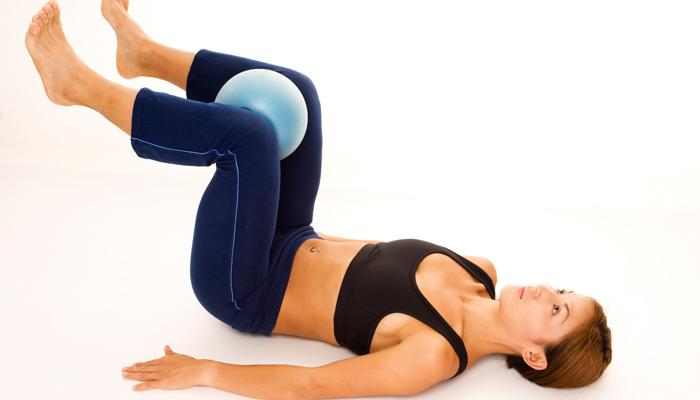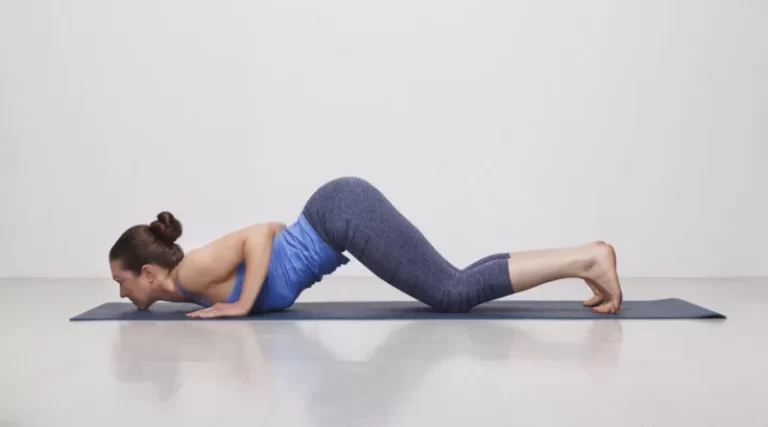How many exercise we do per workout?
The very first thing you do not want to do is over train and end up sore for days or worse, injured. The number of exercises you do per session will differ according to your goals, how much time you have, and whether you are performing a full-body workout or working for a one-muscle group.
There have many things about fitness, but there is not a one-size-fits-all answer to how many exercises you should do per session.
Introduction:
If you are looking for a short and sweet workout that targets your full body muscles and gets your pulse rate up, you will want to try a HIIT workout. Here are two workouts for 30-minute HIIT workouts you can try that have just 4 exercises put pack a major punch. You can also perform workouts that contain more exercises, for example, a series of 8 moves but have small circuits.
If you want to train one body part, you will limit the number of exercises you do to avoid overtraining. A good workout is, to begin with, a four to five movements circuit.
Another factor that affects the training is which muscle you are training. You will be able to perform more exercises with a larger muscle group that fatigues less quickly, such as the legs, than you would be able to do with a smaller muscle, such as the triceps, which get tired more quickly. Instead of trying to get through a lot of exercises, listen to your body which will tell you when it can push a little more, and when it is time for a rest.
If selected exercises appropriately then train them with sufficient volume and intensity, this will be more than enough to make great progress. The concept is that each major muscle group should be exercised twice a week.
This means:
- Focusing on a 60/20 split of the compound to single exercises.
- Performing at least fifteen repetitions of each exercise per session.
- Lifting a weight that is heavy enough to feel muscular fatigue, and Training each major muscle group 2 times a week
Believe it or not, you can accomplish all 4 of these bullet points with just 3-4 exercises in a day. If your aim is weight loss, building muscle mass, or improving your health and fitness then this is good for you.
As mentioned above you should aim for 15-20 total sets per workout with one exercise being 2-4 sets of 8-10 repetitions. This means you should do around 6 to 8 different exercises during that single workout if you are doing three sets of each exercise or you could be doing 10-12 exercises if you are doing two sets of each exercise. Remember we are trying to stay under twenty sets per muscle group per week if you are working for the same muscle group twice a week. Also, do not focus so much on how long your workout should be, but rather, make sure you are hitting all of your muscles with different exercises.
For Losing Fat:
To decrease fat you have to do a high volume of repetitions per set. You have to follow recommended repetition and sets, you must turn up the intensity of these exercises. You can decrease rest times between sets. You can also try to execute HIIT or EMOM or AMRAP circuits to get that heart pumping, that sweat more, and extra calories can be melting. overall I have to explain that the more muscle you are working, the better your fat loss journey will be, and nothing keeps muscle on better than heavy lifts. So, if you can, apply heavy compound lifts as well (with adequate rest time between 2 sets).
For Building Muscle:
If your goal is to build muscle then it is important to note the concept of Time Under Tension (TUT). This is the amount of time the muscle is under tension or in a working phase during a particular exercise. In advance, you can try to lengthen the time of each phase of the exercise. The most concerning movement is the stretching phase where you should do the slow eccentric movement. Think of when you do a bicep curl, you can curl the weight up fast but you should slowly lower the dumbbell. As explained above, the goal is hypertrophy so you will want to have a good mixture of both compound movements and isolation exercises with a repetition range of 10-15 repetitions per set. It is also important to know how long it takes for muscles to grow so you can monitor your progress.
For Beginners:
Those people who are new to fitness should begin with full-body workouts until their bodies get accustomed to exercising. In each full-body workout, each muscle group should be targeted, completing two sets of 10-15 repetitions. = Make sure to give yourself enough rest and take recovery between workout days.
Focusing on some exercises in a day is quite difficult because it forces you to focus on what matters. some workout programs include far too many exercises, which can become counterproductive.
When you do five or six exercises per workout, you run the risk of:
- Focusing on less important exercises
There have only a handful of exercises you want to do to increase muscle mass or strength gain By doing more than 4 exercises, you are very likely to do low-yield exercises that are not a great investment of your time.
- Your workouts becoming too long
I do not know about you, but I do not always have an hour to spend at the gym. Believe it or not, you do not need to exercise longer than 40-45 minutes a day.
- Increased fatigue
If you can schedule your workouts correctly, you do not have a lot of energy left over after four exercises. The fifth and sixth exercises of the day will be mediocre at best.
In general, you should do approximately 2 exercises for a single muscle group, and train each muscle group two times a week.
With that said, you need to ensure that you are training all the larger muscle groups, which are:
- The chest muscles
- The shoulders
- The arms (triceps and biceps) The back (rhomboids, traps, and lats) The quadriceps, The hamstrings, The glutes

Plus, there are other smaller muscle groups in the forearms, calf, and rotator cuff. As you can see, it is difficult to train all the large muscle groups 2 times a week if you only do three to four exercises in a single workout.
How do we overcome this issue?
You can also choose the best exercises that train multiple muscle groups at one time. The exercises you can do per workout depend on your level of capacity. Beginners may do 5-6 exercises, intermediates may do 2-3, and advanced clients may do 2-6. Most of the exercises fall within 6 movement patterns: squatting, lunges, bends, push-ups, pulls, and core. So first, choose what movement patterns you are going to add to your workout. This differentiation depends on your experience.
Then, create a schedule for the workout using the movement patterns. Here is an illustration of a full-body workout framework.


Full-Body Workout:
- Pull-ups
- Squatting
- Push-ups
- Bend
- Lunges
- Core muscle strengthening
Now, you can select an exercise for every new pattern.
There have some Sample Exercises for Each Movement Pattern:
- Squat: Wall Sit, Landmine Hack Squat, Goblet Squat
- Lunge: Walking Lunge, Split Squat, Reverse Lunge from Riser
- Bend: Glute Bridge, Banded Pull Through, Deadlift
- Push: Push Up, Bench Press, Overhead Press.
- Pull: Dumbbell Row, Bent Over Row, Pull Up
- Core: Plank, Dead bug, Farmer’s Carry
Now let us walk you through how to choose what movement patterns and exercises you should do in a workout based on your ability.
Exercises for The Beginner
If you are new to exercise or have not trained consistently for more than one year, you are a fresher.
Beginners should perform full-body workouts and include four to six movement patterns, with 1 exercise per pattern in each workout. If you have to include aerobic training in your workout, alternate between one day of resistance training and aerobic training. Do this for the whole week.
Sample Workout:
- Kettlebell Romanian Deadlift 10-12 reps x 4 sets; rest 65 seconds
- Dumbbell Bench Press 8-12 reps x 2 sets; rest 60 seconds
- Goblet Squat 8-12 repetitions x 2 sets; rest 50 seconds
- Seated Lat Pull Down 8-10 reps x 3 sets; rest 60 seconds
- Banded Dead Bug 10-15 repetitions x 3 sets; rest 50 seconds
Exercises for The Intermediate
If you have been training consistently for more than 12 months and up to four years, you are likely an intermediate trainee.
Intermediates should do 2-3 movement patterns on every workout, with 2-3 exercises per pattern. The volume and intensity of a training session predict how many exercises are in the workout. You can know more about volume and intensity here. For a further training split, do an upper-limb training day, followed by a lower-body day, and then an aerobic day. Repeat this cycle based on your desired number of workout days.
Sample Workout:
Monday (Upper limb and Core):
- Weighted Neutral Grip Pull Up 3-7 reps x 4 sets; rest 2-3 minutes
- Close Grip Bench Press 8-10 reps x 3 sets; rest 90 seconds
- Landmine Row 8-10 reps x 4 sets; rest 2 minutes
- Wall Walk, 3 repetitions x 3 sets; rest 60 seconds
- Goblet Carry, 20m x 3 sets; rest 50 seconds
Tuesday (Lower limb and Core):
- Romanian Deadlift 10-12 reps x 4 sets; rest 2-3 minutes
- Kettlebell Front Rack Split Squat, 10-15 reps x 3 sets; rest 90 seconds
- Tuck L-Sit on Parallels, Maximum Hold x 3 sets; rest 2 minutes
- Barbell Hip Thrust 15-12-10; rest 90 seconds
- Hanging Oblique Raises 10-12 repetitions x 3 sets; rest 2 minutes
Wednesday (Aerobic):
- Row 800m x 2k pace
Exercises for The Advanced Client
You are an advanced person in exercise if you are doing exercise constantly for more than 4 years. An advanced person should do one pattern per workout. Inside of that workout can be 1-6 different exercises in that pattern. Again, the specific number of exercises depends on how much volume and intensity is in per session.
For illustrate, if you are testing a back squat one-repetition max, you might do that one exercise that day because it is very intense. But if the goal is to build volume in the push pattern, you may choose 6 push exercises for one workout.
For an advanced training split, divide one day a week for a single movement pattern.
- Monday (Bend)
- Tuesday (Push-ups)
- Wednesday (Aerobics)
- Thursday (Squatting)
- Friday (Pull-ups)
- Saturday (Lunges)
- Sunday (Rest)
Sample Workout:
- Sumo Deadlift 6-4-2-6-4-2; rest 3 minutes
- Dumbbell Death March, 12-16 alternating repetitions x 3 sets; rest 90 seconds
- Chinese Plank, 35-60 seconds x 3 sets; rest two minutes
FAQ
How many sets we should do per session of exercise?
Once again, this will completely depend on your goal of exercise. If you want to build muscle mass then complete more sets, and also increase the weight you are using. If you aim to get better endurance, sticking to fundamental exercises like squattings, lunges, push-ups, etc, and varying the repetitions you do, the variations of each move and the weight you use within sets will help ensure a strong workout. At a decrease, you can try to do at least three exercises of 3 sets each per workout and see how it feels. As your muscle become stronger and more experienced you can increase this to 4 sets of five or more exercises for a single body part.
How many exercises should be done for a single body part?
This will depend on which muscles you want to build strength in and plan on this for working that day, how much time you have, and your fitness goals. If you are planning to work different body parts over the week, such as the lower-limb one day, arms another, and one day of the chest and back, you may be able to perform 2 to 4 exercises per body part.
How many exercises are too many for a single workout?
If you want to do a full-body workout then you may want to stick to 1 or 2 exercises per body part. Otherwise, you will likely spend way over an hour for a workout if you add too many moves for a single body part. Plus, you will tire out and be unable to complete good form of each exercise, which can lead to an ineffective workout or even injury.
How many exercises should you do per day?
Doing a workout every day is not recommended by most experts. Unless you are a top athlete with very specific training, recovery, and nutrition management then you should be taking rest days multiple times a week. When your body is in a static position your muscles will repair the micro-tears in the muscle fibers and allow your muscles to do better at the same level of strain in the next workout. If you feel the need to move each day, it is totally fine to stretch, go for a walk or try some gentle yoga poses.
When you are trying to tone up or become stronger you will lift heavier and limit your workouts to 2 sets of each exercise. There is not a set number, your goal is to either do 10 to 12 repetitions for size or 12 to 15 repetitions for strength







